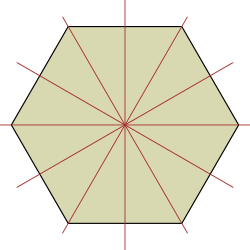Representation theory

Representation theory is a branch of mathematics that studies abstract algebraic structures by representing their elements as linear transformations of vector spaces,[1] and studies modules over these abstract algebraic structures.[2][3] In essence, a representation makes an abstract algebraic object more concrete by describing its elements by matrices and their algebraic operations (for example, matrix addition, matrix multiplication). The theory of matrices and linear operators is well-understood, so representations of more abstract objects in terms of familiar linear algebra objects helps glean properties and sometimes simplify calculations on more abstract theories.[citation needed]
The algebraic objects amenable to such a description include groups, associative algebras and Lie algebras. The most prominent of these (and historically the first) is the representation theory of groups, in which elements of a group are represented by invertible matrices in such a way that the group operation is matrix multiplication.[4][5]
Representation theory is a useful method because it reduces problems in abstract algebra to problems in linear algebra, a subject that is well understood.[6] Furthermore, the vector space on which a group (for example) is represented can be infinite-dimensional, and by allowing it to be, for instance, a Hilbert space, methods of analysis can be applied to the theory of groups.[7][8] Representation theory is also important in physics because, for example, it describes how the symmetry group of a physical system affects the solutions of equations describing that system.[9]
Representation theory is pervasive across fields of mathematics for two reasons. First, the applications of representation theory are diverse:[10] in addition to its impact on algebra, representation theory:
- illuminates and generalizes Fourier analysis via harmonic analysis,[11]
- is connected to geometry via invariant theory and the Erlangen program,[12]
- has an impact in number theory via automorphic forms and the Langlands program.[13]
Second, there are diverse approaches to representation theory. The same objects can be studied using methods from algebraic geometry, module theory, analytic number theory, differential geometry, operator theory, algebraic combinatorics and topology.[14]
The success of representation theory has led to numerous generalizations. One of the most general is in category theory.[15] The algebraic objects to which representation theory applies can be viewed as particular kinds of categories, and the representations as functors from the object category to the category of vector spaces.[5] This description points to two obvious generalizations: first, the algebraic objects can be replaced by more general categories; second, the target category of vector spaces can be replaced by other well-understood categories.
Definitions and concepts[]
Let V be a vector space over a field F.[6] For instance, suppose V is Rn or Cn, the standard n-dimensional space of column vectors over the real or complex numbers, respectively. In this case, the idea of representation theory is to do abstract algebra concretely by using n × n matrices of real or complex numbers.
There are three main sorts of algebraic objects for which this can be done: groups, associative algebras and Lie algebras.[16][5]
- The set of all invertible n × n matrices is a group under matrix multiplication, and the representation theory of groups analyzes a group by describing ("representing") its elements in terms of invertible matrices.
- Matrix addition and multiplication make the set of all n × n matrices into an associative algebra, and hence there is a corresponding representation theory of associative algebras.
- If we replace matrix multiplication MN by the matrix commutator MN − NM, then the n × n matrices become instead a Lie algebra, leading to a representation theory of Lie algebras.
This generalizes to any field F and any vector space V over F, with linear maps replacing matrices and composition replacing matrix multiplication: there is a group GL(V,F) of automorphisms of V, an associative algebra EndF(V) of all endomorphisms of V, and a corresponding Lie algebra gl(V,F).
Definition[]
There are two ways to say what a representation is.[17] The first uses the idea of an action, generalizing the way that matrices act on column vectors by matrix multiplication. A representation of a group G or (associative or Lie) algebra A on a vector space V is a map
with two properties. First, for any g in G (or a in A), the map
is linear (over F). Second, if we introduce the notation g · v for (g, v), then for any g1, g2 in G and v in V:
where e is the identity element of G and g1g2 is the product in G. The requirement for associative algebras is analogous, except that associative algebras do not always have an identity element, in which case equation (1) is ignored. Equation (2) is an abstract expression of the associativity of matrix multiplication. This doesn't hold for the matrix commutator and also there is no identity element for the commutator. Hence for Lie algebras, the only requirement is that for any x1, x2 in A and v in V:
where [x1, x2] is the Lie bracket, which generalizes the matrix commutator MN − NM.
The second way to define a representation focuses on the map φ sending g in G to a linear map φ(g): V → V, which satisfies
and similarly in the other cases. This approach is both more concise and more abstract. From this point of view:
- a representation of a group G on a vector space V is a group homomorphism φ: G → GL(V,F);[8]
- a representation of an associative algebra A on a vector space V is an algebra homomorphism φ: A → EndF(V);[8]
- a representation of a Lie algebra





![(2')\quad x_{1}\cdot (x_{2}\cdot v)-x_{2}\cdot (x_{1}\cdot v)=[x_{1},x_{2}]\cdot v](https://wikimedia.org/api/rest_v1/media/math/render/svg/f161cc2d8891fa83e92614158722dd4713c0bdba)
